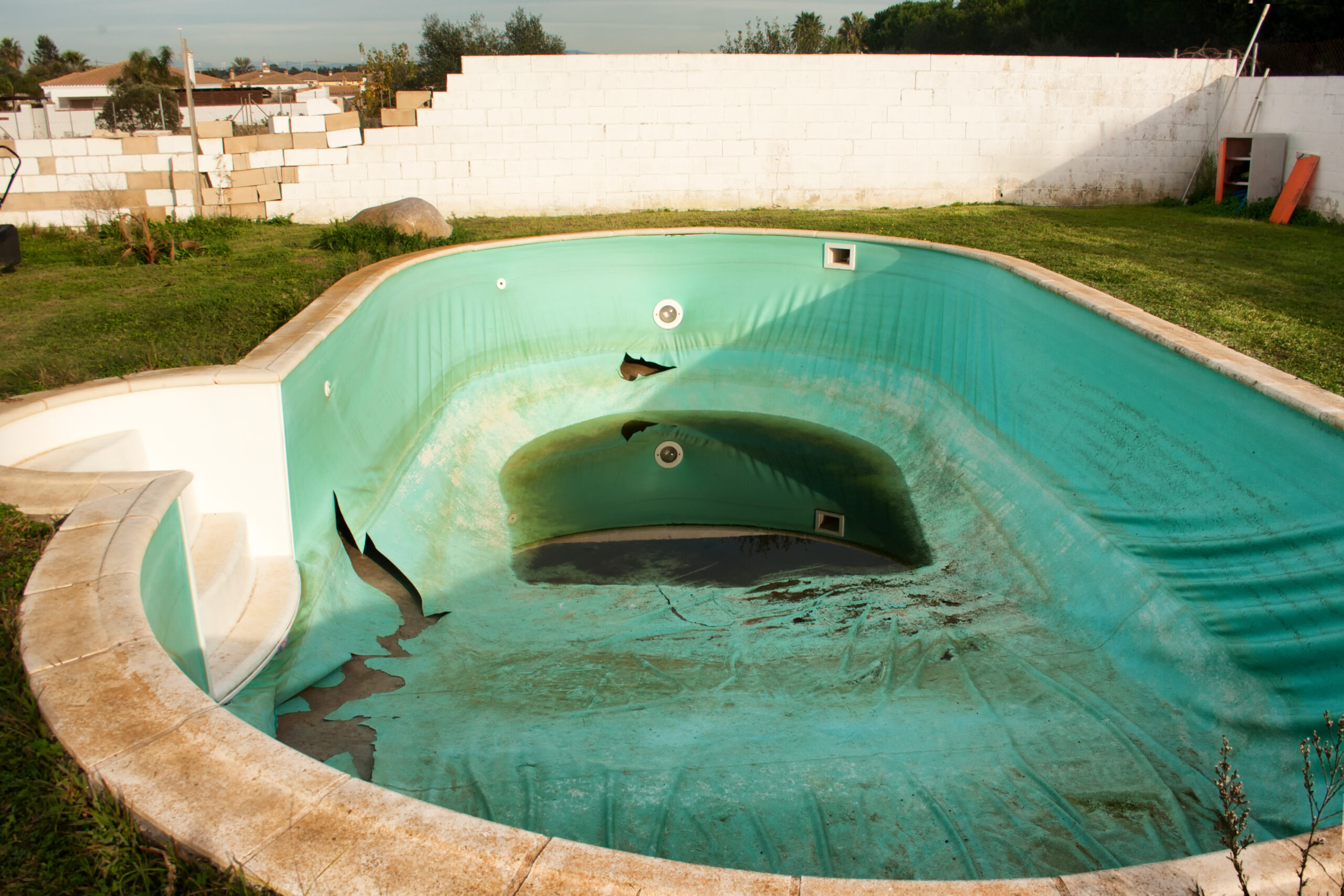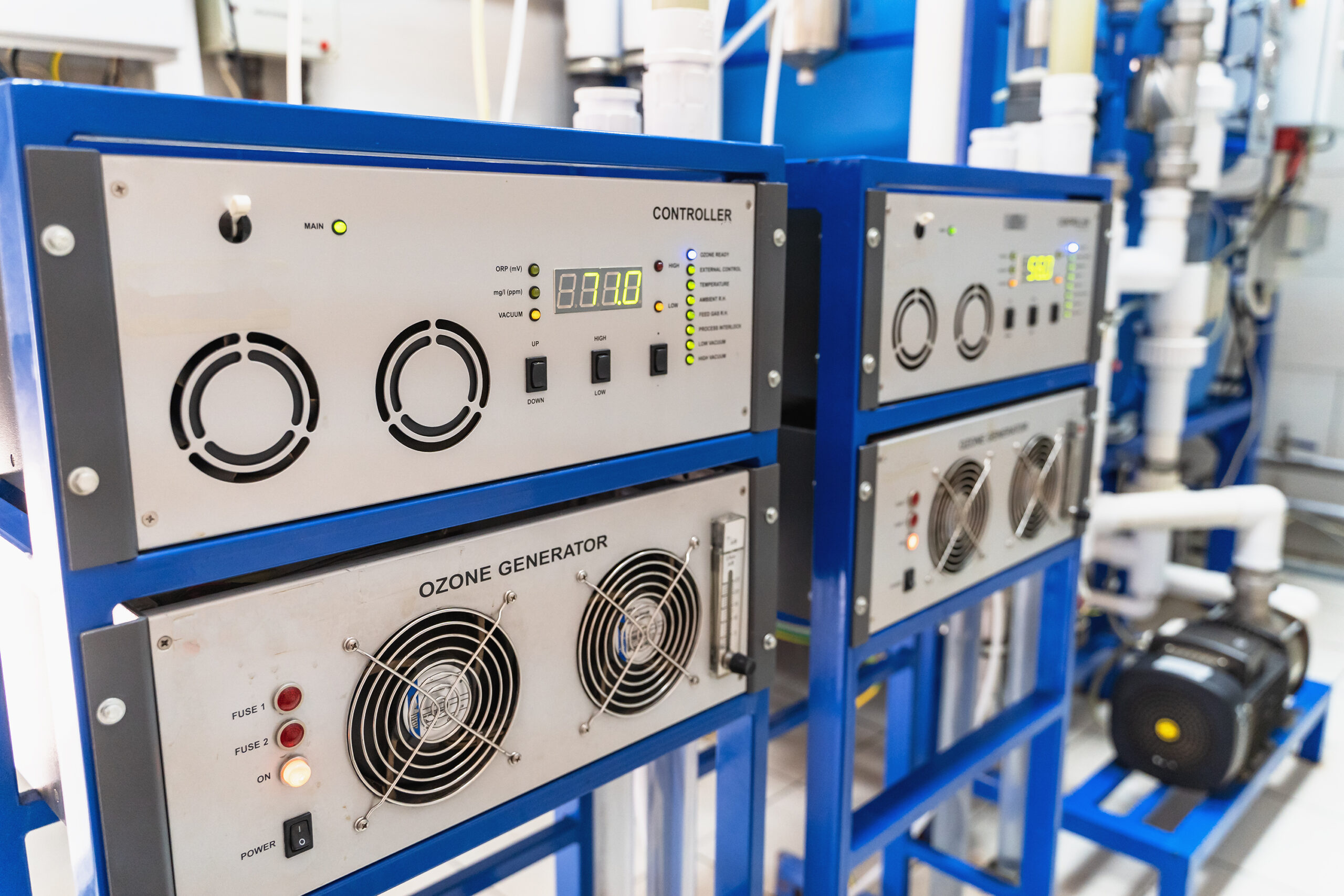You’ve weathered the storm, but what about your pool? It’s not just leaves and twigs you’re dealing with. Unbalanced chemicals and damaged equipment can cause problems too.
Don’t worry! This guide will show you how to evaluate damage, clean up debris, balance your pool’s chemistry, inspect equipment and even prep for future storms.
Let’s dive in!
Evaluating the Storm Damage on Your Pool
After a storm’s passed, you’ll need to evaluate the damage it may have caused to your pool. This process, known as a damage assessment, is crucial in helping you understand the extent of the harm and in determining your next steps.

Start by checking for visible signs of destruction such as cracks on the pool surface or broken tiles. Don’t forget to take note of any discolored water which could be indicative of contamination. You should also inspect all mechanical elements like pumps and filters for any sign of damage.
Once you’ve completed this preliminary inspection, consider calling in professionals who specialize in post-storm pool assessments. They possess the expertise to detect less obvious issues that can compromise your pool’s structural integrity over time if not addressed promptly.
If significant damages are found during the assessment, don’t despair! Your pool insurance should cover most repairs associated with weather-related incidents. Be sure to document all damages thoroughly and report them promptly to your insurer. Remember – prompt action will help expedite claims processing so that recovery work can commence sooner.
Mastering these steps provides an effective approach towards managing storm damage on pools and ensures longevity despite nature’s unpredictability.
Necessary Steps for Cleaning Debris From Your Pool
You’ll need to start by removing any visible debris from the water using a skimmer. Proper pool skimming techniques are essential here for effective results. Ensure you skim in smooth, steady strokes, covering all areas of the pool surface. By doing this, you’ll prevent smaller particles from escaping back into the water.
Next, focus on debris disposal methods which are both environmentally friendly and efficient. Always separate organic materials like leaves or grass from non-organic debris such as plastic or glass. The organic waste can be composted while non-organic items should be disposed of responsibly in your regular trash.
Remember to clean out your skimmer basket regularly during the process to maintain its efficiency. It’s also important to check and clean your pool filter after heavy debris removal as it may be clogged with smaller particles that passed through the skimmer.
Lastly, consider using a pool vacuum for stubborn or sunken debris that couldn’t be removed by skimming alone. Be sure to use slow and overlapping strokes when vacuuming for comprehensive coverage.
Following these steps will ensure your pool is ready for chemical balancing and further treatment post-storm damage cleanup.
The Importance of Rebalancing Pool Chemistry After a Storm
It’s crucial to rebalance your swimming hole’s chemistry following any weather disturbance, as it can drastically alter the pH level, making the water unsafe for use. Rainwater is often acidic and can quickly disrupt your pool’s chemical ratios. Understanding this, you mustn’t underestimate the importance of a thorough pH adjustment after a storm.
To start with, test the water using a reliable kit. Look out for chlorine levels and alkalinity alongside pH. It’s common to find these elements skewed post-storm. Once you’ve got an accurate reading, you’ll need to adjust accordingly using chemicals specifically designed for pools.
Balancing calcium hardness may also be necessary if rain has significantly diluted your pool water. Too low or too high calcium levels can cause problems over time such as corrosion or scaling.
Don’t forget to shock your pool after adjusting its chemistry; this helps kill off any lingering contaminants that could lead to algae growth or other health hazards.
Keep in mind that mastery of this process requires patience and precision-adjusting chemical ratios isn’t something done haphazardly. By committing to regular maintenance and understanding how different factors affect your pool’s balance, you’ll ensure a safe and enjoyable swimming environment no matter what Mother Nature throws at it.
Proper Pool Equipment Inspection and Maintenance
In addition to managing water chemistry, there’s also the need to regularly check and care for your equipment. Worn out or faulty parts can seriously impact the overall functionality of your swimming hole. This includes not just the visible components like ladders and lights, but also your filtration system, pump, and heater. Regular inspection can help identify problems before they escalate.
When it comes to equipment upgrades, you should always consider efficiency and durability. While these upgrades might require an upfront investment, they’ll pay off in the long run by reducing maintenance costs and extending the lifespan of your pool.
Seasonal care is another key aspect of pool maintenance. Each season brings its own set of challenges. Summer’s heavy usage may strain filters, while winter’s harsh weather might damage exposed equipment. You need a tailored strategy for each season, such as regular cleaning during high-use periods and protective measures during colder months.
Remember that preventative maintenance is always cheaper than reactive repair work. By being proactive about equipment inspections and seasonal care, along with timely equipment upgrades when required, you’ll ensure that your swimming hole remains in top condition throughout any stormy spells.
Preventive Measures for Future Storms and Pool Maintenance
Don’t overlook the importance of taking preventive measures for future storms, as they can cause significant damage to your swimming area if left unprepared. An effective strategy involves adopting storm proofing techniques and using weather resilient materials.
Start by securing loose items in the pool area. Anything that can be picked up by strong winds should be stored safely away. This includes pool toys, furniture, and equipment. It’s also a good idea to trim overhanging tree limbs near the pool area to prevent them from falling into the water or damaging surrounding structures during a storm.
Next, consider investing in weather resilient materials for your pool and its surrounding areas. For example, opt for deck material that is resistant not only to water but also to wind and other extreme weather conditions. Use sturdy covers made of durable materials like reinforced vinyl or mesh that can withstand high winds and heavy rain.
Furthermore, install a backup generator for your pool’s filtration system so it won’t stop working when power outages occur due to storms. Making these changes will help ensure your swimming area stays safe and functional throughout all seasons.

Frequently Asked Questions
How Often Should I Check My Pool for Damage After a Storm?
Immediately after any storm, you should check your pool for damage. Look out for storm debris that could harm your system and monitor for signs of algae growth. Regular checks ensure a healthy, clean pool environment.
Is It Safe to Swim in the Pool Immediately After the Storm Has Passed?
No, it’s not safe. Storm preparedness involves emergency measures like assessing water quality and potential damage before you dive in. Contaminants can enter your pool during a storm, making it unsafe for swimming immediately after.
What Are Some Signs That My Pool Equipment Has Been Damaged by the Storm?
Check for damage indicators during your equipment inspection. You’ll spot issues if machinery isn’t functioning properly, there’s visible physical damage, or unusual noises are present. Always prioritize safety when assessing potential storm damage.
What Precautions Should I Take to Protect My Pool During a Hurricane?
To protect your pool during a hurricane, it’s crucial to prioritize storm preparation. This includes securing your pool equipment, using sturdy pool covers and keeping the water levels balanced to avoid potential damage.
How Does a Storm Affect the Water Temperature and How Can I Bring It Back to the Normal Level?
Storm impacts can lower your pool’s temperature significantly. You’ll need to use a pool heater or solar cover to regulate the temperature, bringing it back to its normal level over a few days.
